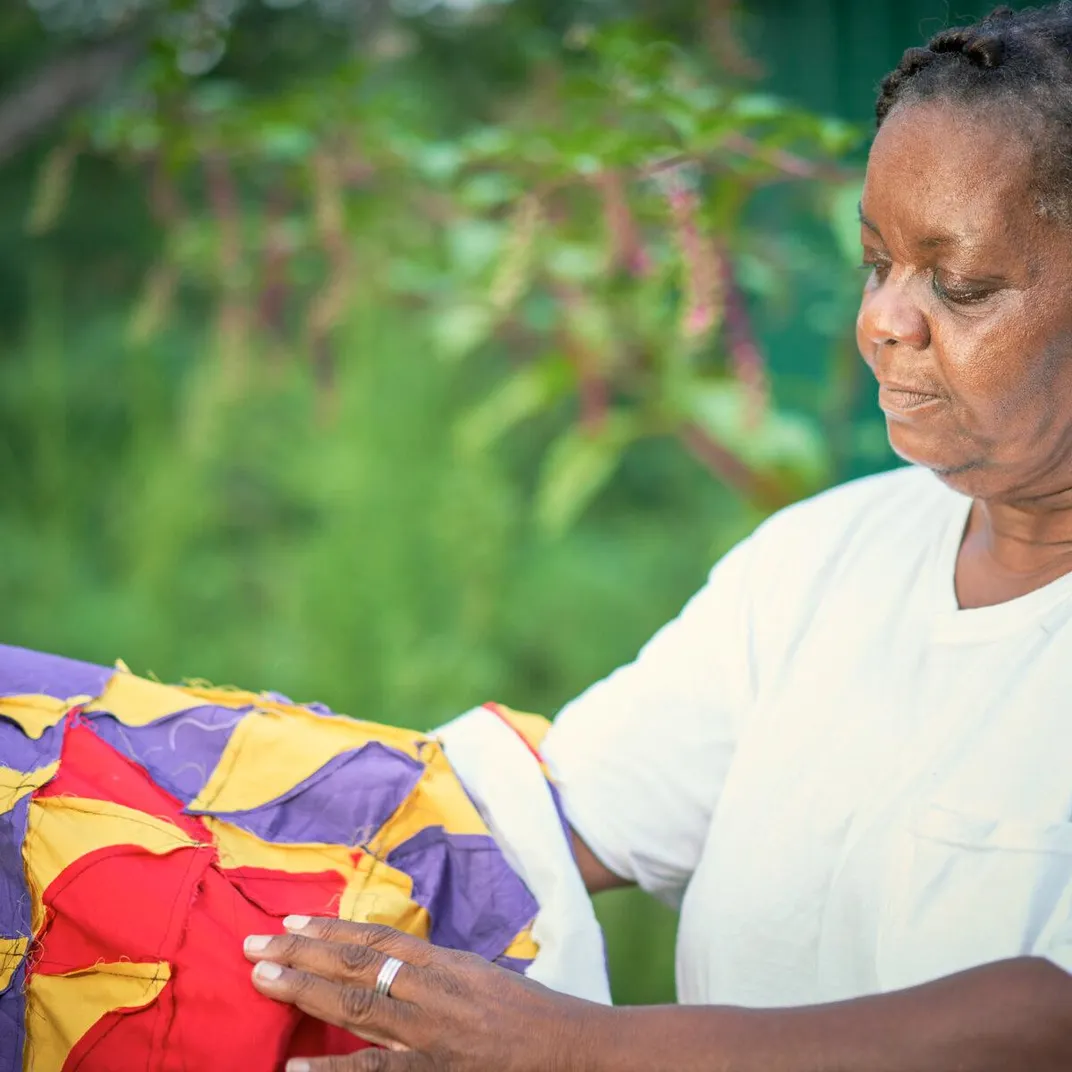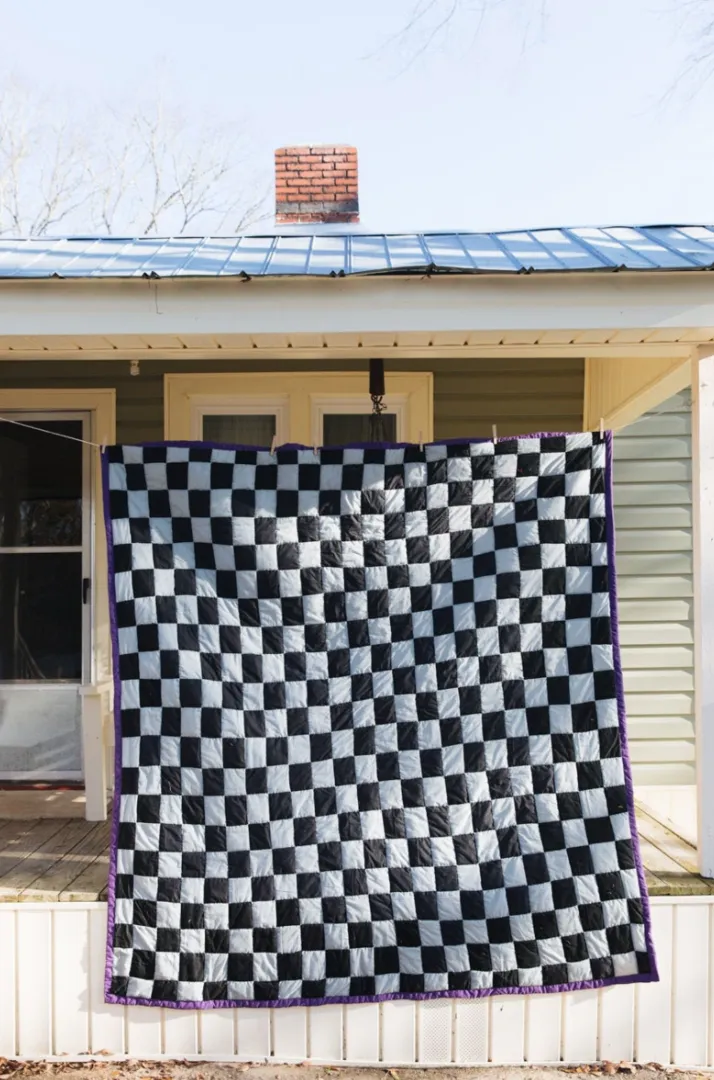Thanks to Etsy, You Can Now Purchase a Gee’s Bend Quilt Online for the First Time
The Alabama community of women quilters launched nine new Etsy stores in honor of Black History Month
:focal(646x422:647x423)/https://tf-cmsv2-smithsonianmag-media.s3.amazonaws.com/filer/ce/97/ce974456-410a-4b13-9e4a-de3a92234767/dorispettwaymosely.jpg)
The women of Gee’s Bend, a small, mostly African American town in rural Alabama, started making masterful quilts in the early 19th century. But the art world only began recognizing their work relatively recently, with the first major exhibitions of Gee’s Bend quilts taking place in the early 2000s. Since then, cultural institutions including the Metropolitan Museum of Art, the National Gallery of Art and the Smithsonian American Art Museum have added colorful quilts by artists Martha Jane Pettway, Mary Lee Bendolph, Lucy T. Pettway and many more to their collections.
Though the Gee’s Bend quilters’ works have garnered resounding critical acclaim, this success hasn’t always translated into financial gain. According to Nest, a nonprofit that advocates for the handworker economy, the average annual income in Gee’s Bend remains around $12,000.
Nest recently partnered with Souls Grown Deep Foundation and Community Partnership (SGD)—the nonprofit that advocates for Gee’s Bend and other black artists from the South—to help the quilters sell their works online. This week, the organizations announced that art lovers can now purchase a Gee’s Bend masterpiece directly through Etsy, the digital marketplace that specializes in handmade goods.
According to a statement, Etsy debuted nine online stores featuring work by Gee’s Bend quilters in honor of Black History Month. Offerings range from a $3,280 black, white and red quilt by Sharon Williams to Loretta Pettway Bennett’s handmade quilted masks, which sell for about $15. Additional quilters are expected to be added to the site later this year, reports Taylor Dafoe for Artnet News.
As part of the collaboration, Etsy gave Nest a $50,000 grant to offset the cost of marketing, photography and other services necessary to create the online shops. Etsy trend expert Dayna Isom Johnson tells Artnet News that listing and transaction fees will be covered for at least seven months so that all proceeds can go directly to the quilters.
“We are always looking for new opportunities to expand the Etsy community and help creative entrepreneurs realize their economic potential,” Johnson adds.
According to a statement, Nest has collaborated with Gee’s Bend quilters since 2019. By creating new online avenues for selling the women’s work, the nonprofit estimates that it has helped generate $92,000 in income in the past year alone.
Maxwell Anderson, president of SGD, tells ARTnews’ Claire Selvin that while his organization aims to help Gee’s Bend quilters earn recognition in the art historical canon, this new initiative focuses on “foster[ing] economic development” for the quilters.
Caster Pettway, one of the quilters who just debuted her shop on Etsy, tells New York magazine’s Lauren Ro that she’s been making quilts for about four decades, since she was in third or fourth grade. Each piece can take as long as a week to complete.
Like many quilters in the community, Pettway learned how to make quilts from her mother.
“We’d come home from school, and we’d quilt in the evening,” she says. “At night when we went to bed, my mama would put the quilts up. I remember we had quilts hanging from the ceiling with a nail, and there were two poles with a rope tied up to the ceiling.”
Pettway’s Etsy designs include a pattern of enormous yellow and green rectangles, valued at $4,900; a baby blanket with a blue-and-white snowman print; and a handsewn American flag.
“I like to sew each stitch with my hands,” she tells New York. “I feel more relaxed doing it this way, and I can just concentrate better when I’m sewing with my hands.”
As Amei Wallach wrote for Smithsonian magazine in 2006, Gee’s Bend’s quilting community traces its roots to the early 1800s, when enslaved women working on Joseph Gee’s cotton plantation began stitching pieces of fabric together to create bedcovers. Later, in the decades following the Civil War, local women made quilts “to keep themselves and their children warm in unheated shacks that lacked running water, telephones and electricity.”
As the quilts evolved, according to Smithsonian, their creators “developed a distinctive style, noted for its lively improvisations and geometric simplicity.”
/https://tf-cmsv2-smithsonianmag-media.s3.amazonaws.com/accounts/headshot/nora.png)


/https://tf-cmsv2-smithsonianmag-media.s3.amazonaws.com/filer/89/d0/89d0f076-6c04-4f7b-b1be-1bc7a15b5aef/screen_shot_2021-02-02_at_122745_pm.png)

/https://tf-cmsv2-smithsonianmag-media.s3.amazonaws.com/accounts/headshot/nora.png)